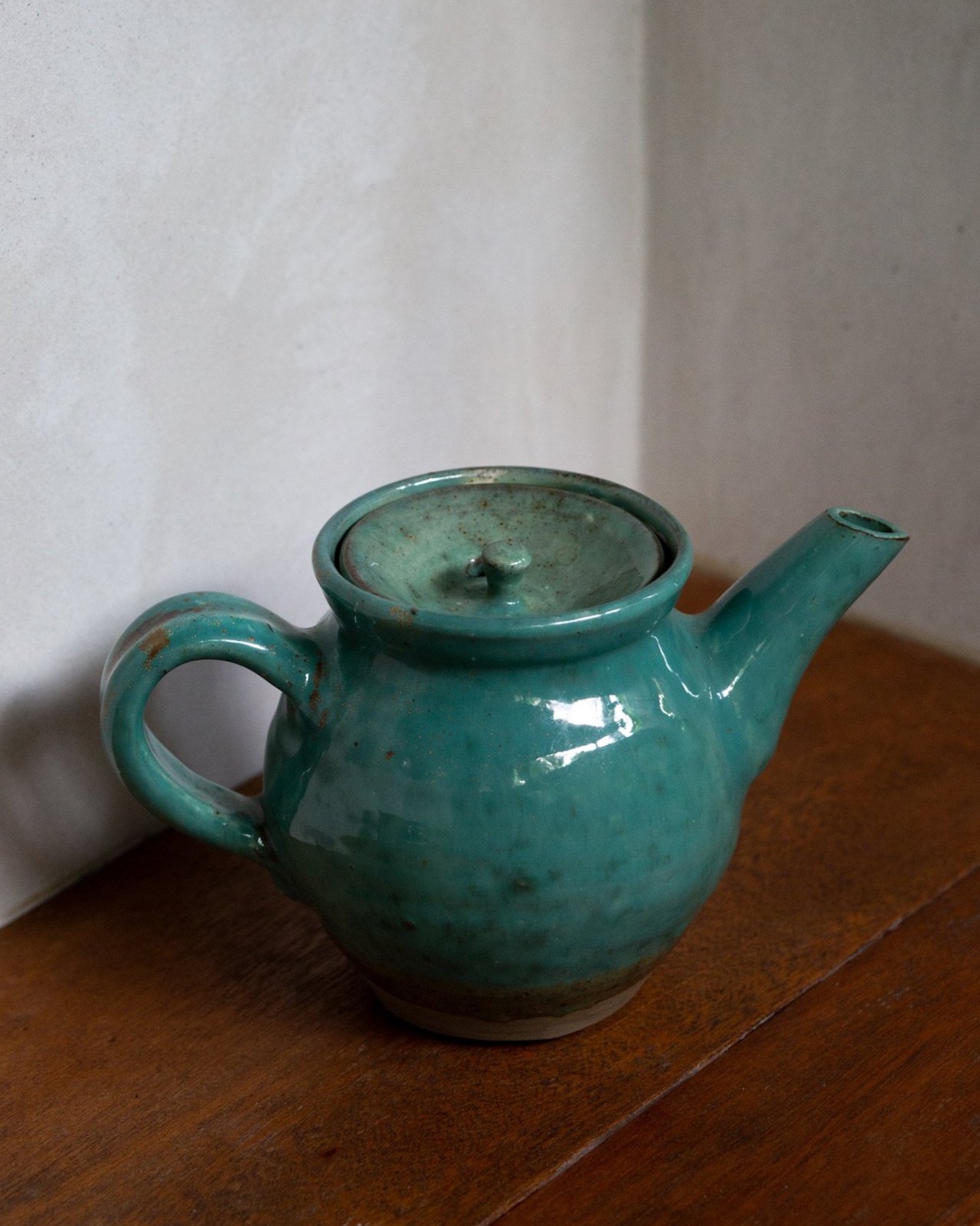 Image 1 of 3
Image 1 of 3

 Image 2 of 3
Image 2 of 3

 Image 3 of 3
Image 3 of 3




Green Tea
This teapot was produced on the Japanese island of Kyushu according to ancient techniques dating back to the 15th century when Korean potters brought new techniques such as kiln design and ash-glazing.
This teapot was produced in the small village of Onta where a few potters work together as a community in the folk-art tradition creating objects both for daily use and artistic purposes. Onta pottery has been designated an Intangible Cultural Property of Japan meaning that potters continue to work according to traditional methods and perpetuate important old knowledge and savoir-faire.
The finesse of the green glaze and the unique shape of the lid of this teapot create an esthetical serving in harmony with nature. The earthy ceramic intensifies the taste of infused tea leaves in water.
This teapot was produced on the Japanese island of Kyushu according to ancient techniques dating back to the 15th century when Korean potters brought new techniques such as kiln design and ash-glazing.
This teapot was produced in the small village of Onta where a few potters work together as a community in the folk-art tradition creating objects both for daily use and artistic purposes. Onta pottery has been designated an Intangible Cultural Property of Japan meaning that potters continue to work according to traditional methods and perpetuate important old knowledge and savoir-faire.
The finesse of the green glaze and the unique shape of the lid of this teapot create an esthetical serving in harmony with nature. The earthy ceramic intensifies the taste of infused tea leaves in water.
This teapot was produced on the Japanese island of Kyushu according to ancient techniques dating back to the 15th century when Korean potters brought new techniques such as kiln design and ash-glazing.
This teapot was produced in the small village of Onta where a few potters work together as a community in the folk-art tradition creating objects both for daily use and artistic purposes. Onta pottery has been designated an Intangible Cultural Property of Japan meaning that potters continue to work according to traditional methods and perpetuate important old knowledge and savoir-faire.
The finesse of the green glaze and the unique shape of the lid of this teapot create an esthetical serving in harmony with nature. The earthy ceramic intensifies the taste of infused tea leaves in water.
Origin: Japan
Material: Natural Clay
Condition: New
Dimension: H 11,5 x D 18,5 cm
Care: Rinse gently with water. Avoid using aggressive soap to preserve the quality of the ceramic and to respect its natural properties.
